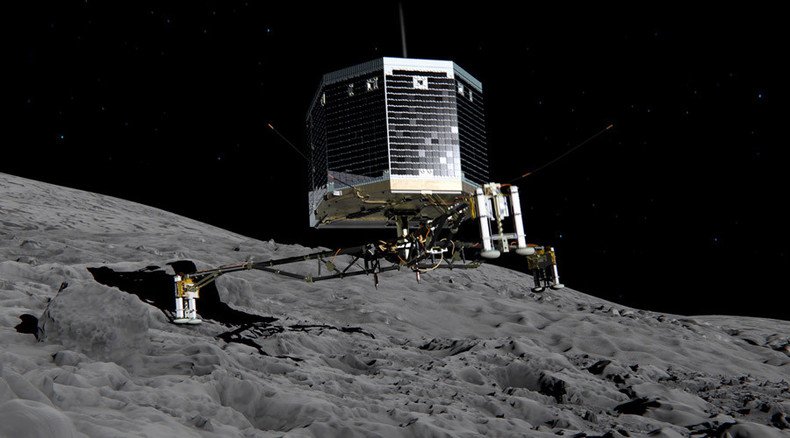Philae comet lander silent for 11 days, scientists struggle to wake it up

Contact with the European lander Philae on the surface of the comet 67P/C-G has been lost long enough to seriously worry the scientists operating it from Earth. The lander could have had one of its receivers damaged, or moved to an area without reception.
Last time the probe reported back to the German Aerospace Center (DLR) was on 9 July 2015. It’s been in “silent mode” ever since. The team has been unsuccessfully trying to get back in contact with Philae to conduct scientific measurements.
"In the telemetry received, we have observed signs that Philae could have moved and that its antennas are thus perhaps more concealed or their orientation might have changed," said Stephen Ulamec, the leader of Philae's project, adding that the robot lab could have moved due to outgassing during the comet's awakening.
Latest #news about the #Philae lander on #comet#67Phttp://t.co/ylock5SZGn (KR) @Philae2014#Rosettapic.twitter.com/VDZ5sCY6b8
— DLR - English (@DLR_en) July 20, 2015The scientists fear that one of the landers' radio receiver units is damaged and that one of the transmitter units is not fully functional. However the team still hopes to resume the contact with Philae.
"The lander is obviously still functional, because it sends us data, albeit at irregular intervals and at surprising times. There have been several times when we feared that the lander would not switch back on, but it has repeatedly taught us otherwise," says Ulamec.
READ MORE: No extraterrestrial life forms on Philae’s comet after all?
Philae is programmed to switch back and forth between the two transmitters periodically, which explains why the contact is irregular. Scientists have used their on-the-ground model of Philae to test a command that will cause the probe to only interact with the functional transmitter.
“This command has been transmitted to the lander. This 'blind commanding' – without the lander sending a confirmation – should make it possible for it to receive the command and execute it as soon as it is supplied with solar energy during the comet day and switches on,” said Ulamec.
The engineers also plan to activate a 'work package' on Philae that was successfully executed in November 2014 during the landing. The team had supplied the probe with a kind of 'emergency program' which enables it to still operate five instruments without communication.
READ MORE: Philae Lander probe may give glimpse of solar system’s origins – Rosetta scientist
"With this work package, the thermal probe MUPUS measured temperatures, ROMAP and SESAME conducted measurements, and PTOLEMY and COSAC researched in 'sniff' mode," said Ulamec.
These instruments do not require complicated commands, but the stored work package must first of all be retrieved. Should the idea work, it would start to conduct scientific measurements and then send the data to Earth as soon as Philae switches it on.
It’s not the first time that the team lost contact with Philae. When it first landed on the comet on November 12 last year, contact was lost as the landing place was in the shadow of a cliff and the solar-powered probe was out of energy to communicate the team. The contact miraculously resumed seven month afterwards on June 13, 2015.












